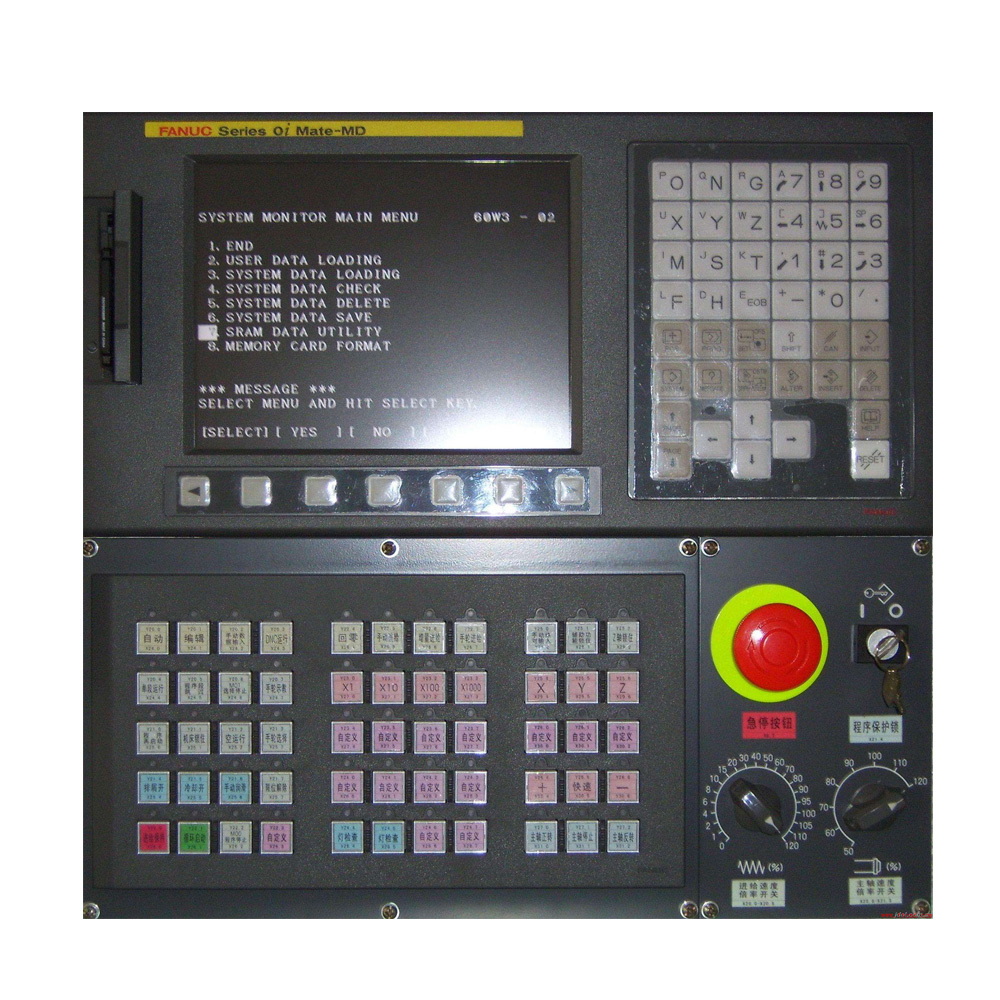Weapons and equipment are related to national security, and their production and manufacturing cannot completely rely on imported CNC machine tools. Although China has become the world’s largest importer of CNC machine tools as early as the 1990s, developed countries have been erecting various obstacles. Not only are procurement channels poor and it is difficult to obtain high-end equipment (note: Europe strictly prohibits the leakage of 5-axis linkage CNC machine tool technology, and the importing country must ensure that it will not be used for military purposes before purchasing), but it is also necessary to accept the so-called “end-user access” of the manufacturer. (Note: Foreign parties can use this to obtain important information such as the final purpose and usage of CNC machine tools), which can easily lead to leakage of confidentiality.

In order to get rid of the situation of being controlled by others, the Chinese government has introduced a policy that domestic CNC machine tool manufacturers can enjoy state subsidies as long as their annual investment in technology research and development is no less than 5% of product sales. At the same time, CNC machine tools are listed as one of the 16 major national science and technology projects identified in the “National Medium and Long-term Science and Technology Development Plan”. According to the plan, by 2020, 70% to 80% of the high-end CNC machine tools needed for China’s aerospace, shipbuilding, automobile, and power generation equipment manufacturing will be based in domestic manufacturing.
The A and C swing angle high-speed machining centers developed by Shenyang Machine Tool have solved the problem of high-speed machining of large aluminum alloys in the aviation field. The bridge-type 5-axis gantry machining center developed by Jinan Second Machine Tool Factory solves the problem of titanium alloy forgings processing in the aerospace field. The large-scale turning and milling compound machine tool developed by Shenyang Machine Tool has overall improved the accuracy and processing efficiency of large-scale ship crankshaft processing, and has played a positive role in solving the problem of my country’s backward ship power. The 5-axis CNC blade grinder developed by Shaanxi Qinchuan Machine Tool Group has also been used in the engine blade grinding production line of Liming Aero Engine Company, ensuring the mass production needs of aviation companies.
The CKX53160 CNC single-column mobile vertical turning and milling machine developed by Wuhan Heavy Machine Tool Factory completed the processing task of the 550-ton giant hydraulic turbine runner of the Three Gorges Hydropower Station. The factory has also developed a heavy-duty 7-axis 5-linkage turning and milling compound processing machine tool, which can bear a load of 100 tons and can complete the entire process of processing large military ship propellers in one clamping.
Particularly worth mentioning is the first domestic 9-axis 5-linkage CNC machine tool successfully developed by Dalian Machine Tool in 2006. Back then, the Soviet Union only obtained four 9-axis CNC machine tools from Toshiba, Japan, which greatly improved the silent performance of its nuclear submarines, making the West The anti-submarine detection network, which took decades of painstaking efforts and cost tens of billions of dollars to build, was destroyed.
A 2010 survey showed that compared with 10 years ago, the share of China’s self-made CNC machine tools has increased significantly. Their applications in the military and energy fields have tripled, accounting for two-thirds of the entire machine tool usage. They are imported. 2 times the number of CNC machine tools. Especially after the bombing of the embassy in the former Yugoslavia in 1999, China’s military industry, having learned from the painful experience, received a large amount of funding and began a new round of technological transformation on an unprecedented scale, and generally adopted a combination of “a small number of high-end imported machine tools + a large number of domestically produced ordinary machine tools” model. It is reported that the number of machine tools imported by various military industrial groups in the middle and late stages of the “Twelfth Five-Year Plan” dropped by nearly 60% compared with the “Eleventh Five-Year Plan”, and the previous major importer AVIC also dropped by nearly 15%. Of the total investment arranged by China Shipbuilding Industry Corporation in 2013, less than 5% was for imported equipment.

But while seeing gratifying results, the Chinese still have to face up to such a serious reality – currently, China’s mid-to-high-end CNC machine tools mostly rely on imports. Even if it can be assembled and manufactured, the key functional components – CNC system, CNC tool holder, spindle unit, tool magazine and ball screw pair (Note: a transmission device) and rolling linear guide pair (Note: a supporting and guiding function) components) also relies heavily on imports.
In particular, the CNC system known as the “machine tool brain” (composed of a display, controller servo, servo motor and various switches and sensors) has just started in China, and 90% of the CNC system still needs to be imported from Japan’s FANUC ) and imported by companies such as Mitsubishi (MITSUBISHI), German Siemens (SIMENES) and Liebherr. Among them, Japan’s Fanuc and Germany’s Siemens occupy 80% of the global high-end CNC system market.
It should be noted that foreign machine tools sold to China sell software and stand-alone machines separately. For example, the total price of 16 software packages of Liebherr CNC system (RMB 2 million to 3 million) is equivalent to a 5-axis machine tool. Linked machine tools (import price 300,000 to 470,000 US dollars), such huge profits are simply robbery. In addition, there is a big gap between domestic CNC tools and foreign countries in terms of service life and reliability, mainly due to low durability. For example, 5-axis linkage CNC machine tools. Foreign products can work continuously for 1,500 hours without failure, while domestic ones One indicator is about 1000 hours, which is a difference of one-third. It is reported that most of the failures of domestic CNC machine tools occur in functional components, which is the main source that affects the use and promotion of the former.
Although China has significantly reduced its import of Japanese machine tools since 2013, since it cannot be self-sufficient in high-end products, it has had to turn to purchasing machine tools from Germany, the United States, the United Kingdom, and Italy, which suffers from a price disadvantage. Statistics show that in 2015, the average unit price of CNC machine tools exported from China was only US$30,000, while importing one cost an average of US$160,000. The reason is that domestic machine tools have low added value and lack core technologies in high speed, high precision, composite, and intelligence.
The person in charge of Dalian Machine Tool once said that the factory can reach 95% of the international advanced level, but the remaining 5% cannot be achieved by one company or even one industry, but needs to include steel, metallurgy, standard parts, CNC The national industrial front including , technology and testing work together to improve the overall level.
